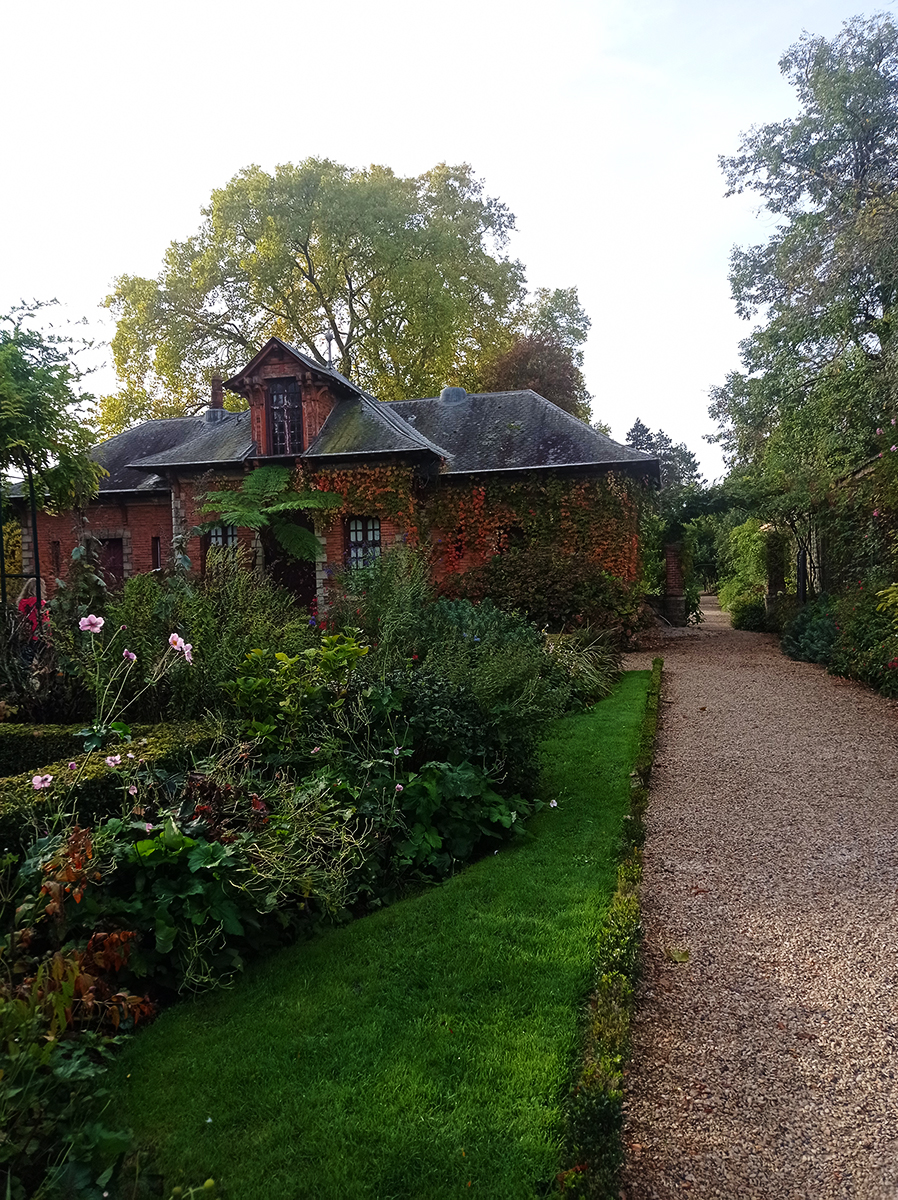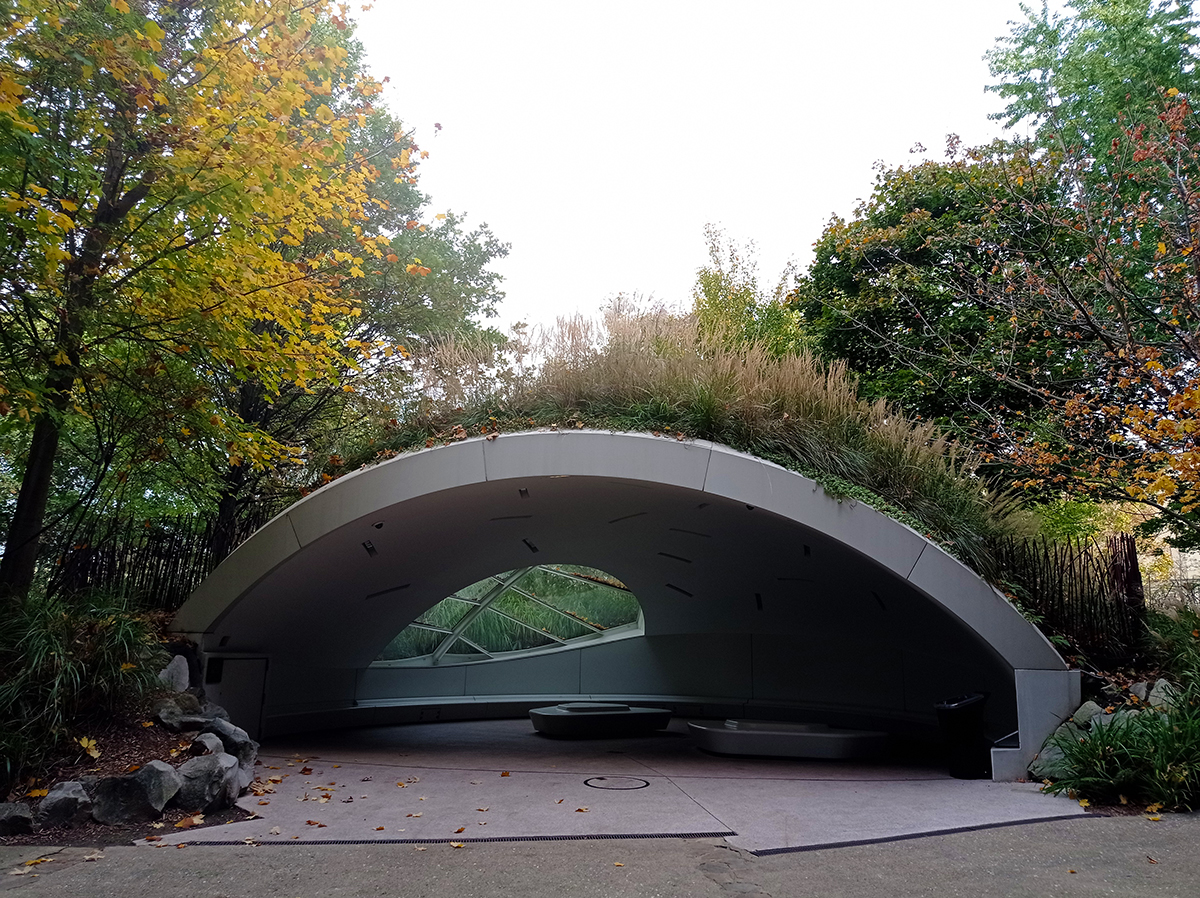An Agronomist in Paris went there with his 11 companions and two teachers who are not mentioned in the title, but in order to paraphrase a famous film (An American in Paris from 1951 with Gene Kelly).
The Garden Technical Tour in Paris with future Doctors of Agronomy
In the autumn of this year, the University of Pisa, during the master’s degree course in “Planning and Management of Urban Green and Landscape” (https://www.agr.unipi.it/il-corso-di-studio-in-breve-2/), he organized a study trip to Paris very well.
The setting saw a first part of preparation of the students at home and an itinerant one on site. This type of travel is frequent for this course.
Also in previous years the school organized trips to London, Barcelona and other wonderful European cities in the same way.
The undergraduate course of Planning and Management of Urban Green and Landscape, as well defined by the Department of Agricultural, Food and Agro-environmental Sciences of the University of Pisa itself: “aims to prepare professional figures with high cultural, scientific and applicative level training, for the ordinary and extraordinary design and management of ornamental, historical and sporting greenery, in urban and extra-urban contexts.”
How is the course set up? How do you become an agronomist?
The course serves to acquire the skills necessary to become a real ‘manager’ of urban greenery and allows you to be able to enroll in the exam for enrollment in the register of agronomists.
The carrying out of professional activities (both managerial and operational) and participation in refresher courses remain fundamental pillars, together with the active confrontation with professionals in the sector – such as managers of the public parks of various Italian municipalities – enrolled in the course.
You will find all the information about the course “Progettazione e gestione del verde urbano e del paesaggio (ProGeVUP)” on the University of Pisa website, however I would like to underline one piece of information:
This course teaches teamwork. If you have a doubt about a notion that is not within your competence, include or ask the green professional who has that competence. When the professional in question does a job, perhaps he will ask you for something that is your (and not his) competence. This also serves to not take responsibility that does not compete.
An Agronomist in Paris doing the tour: How many parks are there in Paris?
We were saying that this year the destination was Paris which boasts many public parks (22 the most important ones according to https://it.map-of-paris.com/parchi—giardini-mappe/parigi-giardini-mappa ) and a – it seems to us – excellent organization in managing them.
The class was divided into groups and everyone prepared a park so that they could then explain it to their classmates during the visit.
Furthermore, a meeting was organized with the “Direction des espaces verts et de l’environnement” office of the municipality of Paris in which the setting up of maintenance and the future objectives of the municipality was explained.
Meeting with the Paris Public Green Directorate: How are parks and gardens managed in Paris?
The journey starts precisely from this meeting which an Agronomist in Paris – Mr. Volonterio – speaks to us about directly:
“It was a great pleasure to have the opportunity to meet the leaders at the Mairie de Paris of the management of public parks and the environment.
The topics of the meeting were mainly the new redevelopment interventions of public spaces and the challenges to be faced with regards to the theme of climate change. The increase in services linked to soft mobility and the new solutions adopted at the “urban planning” level have certainly been of great inspiration and I was struck by the fact that in France the agronomist is considered on a par with an engineer.”
The information he has been given is, for example, that the municipality has 2 public nurseries, hundreds of hired gardeners – 33 for Parc Citroen alone – who look after the green spaces. They argue that having these staff under public contracts facilitates training, even if they admit that it is difficult to find gardeners.
For example, the management of the Parc Citroen is 80% done with staff from the municipality and the plants they use for replanting are 50% indigenous and 50% Mediterranean.
Parks and Gardens in Paris: What are the Jardins Partagér?
In Paris public spaces are granted to citizens and are called Jardins Partagés and have the characteristic of being maintainable by anyone, often inhabitants of the neighborhood who put their hand to the abandoned green space and fix it up. Even with them we are in that phase in which the piece of land given in concession is seen more for production than for embellishment, therefore we dedicate ourselves more to the vegetable garden than to the flowerbed to look at. The importance of being surrounded by beauty to make the world better is still greatly underestimated. As in all things you need to gain experience, but if you ever start you never acquire it.
Surely one day soon citizens will be able, both in terms of desire and ability, to maintain or lend a hand in managing green spaces, even just to look at.
An Agronomist in Paris – Gardens and urban green management: The objectives of the Municipality of Paris
The goals set therefore seem to be, for example, planting 170,000 trees by 2026 and having a green space every 15 minutes on foot. Reducing the waterproofed surface (to better understand this topic, I recommend reading Ms. Degré’s contribution in the article “MASTERS OF LANDSCAPE: UNIVERSITE’ ‘D’ETE’: GANDI AND DEGRE’”which speaks clearly and exhaustively.)
Putting portions of disused railway roads in green (following the example of other cities in the world that have already done it successfully by calling them Greenways in the world or Binari verdi in Italy). You will find everything on the internet.
Greening the parking spaces and reducing the size of the roadways, leaving room for greenery;
Mr. Volonterio, who kindly lent himself to tell us about this trip, was born as a gardener and claims that
Every agronomist should start out as a gardener.
Following the Gardener diploma obtained at the Minoprio Foundation (one of the best national schools in the horticultural sector), in fact, he graduated with honors in “Production and Protection of Plants and Green Systems” at the Faculty of Agricultural Sciences of the University of Milan.
“[…] Fundamental throughout the training period was the possibility of being able to carry out work activities in the sector, which allowed me to develop professional skills in parallel with the technical-scientific skills. […]”.
An Agronomist in Paris: What are the most famous parks in Paris?
To prepare for this trip, Mr. Volonterio dedicated several days to observing the green works of Paris, starting from the historic gardens of Versailles, Luxembourg and Bois de Boulogne, up to urban redevelopment interventions such as Parc de la Villette , Viaduc des Arts, Parc Citroen and Jardin du musee du Quai Branly (just to name a few), deepening in particular the style of Gilles Clément’s ‘planetary garden’, a source of great inspiration.
The voice of the teacher
Prof. Remorini, Professor of Urban Arboriculture accompanied them and tells us this:
“Thanks to the funding of the special teaching projects of the University of Pisa, last autumn we were able to organize a seven-day “Garden technical tour” which allowed our students, but also me and my colleague Fontanelli, to live a unique experience in contact with historic parks and gardens in Paris. These initiatives are mainly exploited from a didactic point of view to learn knowledge that is difficult to acquire in traditional classroom lessons and also in general, and so it happened this time too, they are useful for consolidating interpersonal relationships and for cultural and leisure activities, as well as to keep fit since this year almost 150 km were covered on foot!”
IN SUMMARY
Mr. Volonterio and we at Mondo del Giardino thank the University of Pisa for its existence, competence and vision of the future, hoping that it will want to share other green trips and experiences with us, because this, with an agronomist, in Paris was truly a nice trip!
the Mondo del Giardino advice
If you have read the article about the book “HE GARDEN OF MISUNDERSTANDINGS” you will know that many of the historic parks that you are going to see in Paris and in the world have not maintained their initial structure, many errors and changes in good or bad faith have been made: always keep this in mind when visiting a garden and pay attention to the frescoes in castles and palaces that offer visions of the original layout of the garden because they are the only and last representations available to us.
Now on horseback! Work awaits us! Our new wonderful outdoor space is about to be born!
GOOD WORK and … if you have any questions please write to info@mondodelgiardino.com
Sources of the images: thanks to Mr. Volonterio for the photos of the gardens; thanks also to Bidyut Das and Pierre Blanche of Pixabay; the maps of the gardens were taken from en.maps-of-paris.com; the Jardins partagér from lecriduzebre.org, blog.velib-metropole.fr and blog.cooloc.com
































